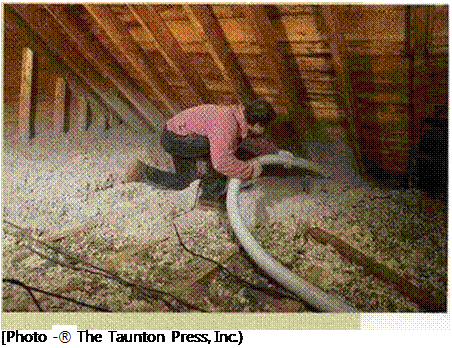Materials CHOOSING CAULKS AND SEALANTS
IF YOU WALK DOWN the caulk and sealant aisle at any well-stocked hardware store or home center, it’s easy to feel overwhelmed by the variety of products available. For quite a few years now, the terms "caulk" and "sealant" have been used interchangeably. In technical terms, sealants are supposed to be more flexible than caulks, meaning that they are able to expand and contract with the movement of materials. But even caulk and sealant manufacturers have different definitions for these materials. For this reason, it’s smart to ask local builders and knowledgeable building – material suppliers which caulks and sealants are recommended for various jobs.
Although manufacturers haven’t cleared up the distinction between caulks and sealants, they have improved their labeling with regard to specific applications. For example, "painter’s caulk" is an inexpensive latex-type caulk that is primarily used to fill gaps in and around interior trim prior to painting. Caulk that is labeled "for kitchen and bathroom use" is waterproof and will adhere to tile, porcelain sinks, acrylic shower units, and other surfaces found in those rooms. Silicone and urethane sealants are usually more expensive than acrylic or latex-acrylic caulks and are primarily used in exterior applications where extra durability, flexibility, and weather resistance are important.
Materials FIBERGLASS AND CELLULOSE INSULATION

THE TWO MOST COMMON TYPES of insulation used in homes today are fiberglass and cellulose. Both are partially manufactured from recycled materials. Fiberglass is made from 25% recycled bottles and other types of glass that are heated and spun into fibers. Cellulose insulation is made from 75% recycled newsprint which is treated with fire retardant.
Fiberglass comes in batts that are made in different widths and thicknesses. For shipping and storage, the batts are rolled up like long, thick blankets. Loose-fill fiberglass insulation is also available, but batts are much more common. Cellulose is usually blown into attic spaces and wall cavities (see the photo at right). Blowers can often be rented at supply stores, but usually an insulation contractor is hired to install cellulose. Cellulose is somewhat more expensive than fiberglass but has a higher R-value per inch, so it can end up saving you more money in energy costs.
Like roof-shingle coverage, insulation coverage is calculated by the square foot. Add up the total square footage of the floor, the ceiling, and all the
exterior walls. Unless you have an entire wall of doors and windows, don’t subtract the wall openings. You may end up with a little extra insulation, but you can always put it in the attic.
If you’re buying insulation at a home center or an equivalent store, you’ll find the per-roll coverage on the label. If you’re buying it from a professional supplier, you simply need to provide the total square footage and whether the stud (and joist) bays are 16 in. o. c. or 24 in. o. c. That’s because fiberglass batts are either 15
in. or 23 in. wide and are sized to fit between studs and joists at conventional spacings. Long, uncut rolls work well between floor and ceiling joists. Precut sections are also available for standard 8-ft.-high walls and save on installation time.
sufficient flexibility to maintain a seal even though the joint expands and contracts slightly. For advice on selecting caulks and sealants, see the sidebar on the facing page.
If you plan to use caulk or sealant to fill a gap wider than / in., its a good idea to insert a backer rod into the joint before you apply the sealant. Available where caulks and sealants are sold, backer rod is made from dense, compressible foam. When wedged into a joint, it helps seal the area and lets you apply a thinner bead of caulk or sealant.
STEP 2 Insulate the Walls, Ceilings, and Floors
Although the reason for sealing cracks and gaps in a house frame may be fairly obvious— you don’t want cold breezes (or hot air, depending on where you live) blowing through the house—the function of insulation may not be as evident. It is not to block airflow but rather to create pockets of dead air. Air pockets do the actual insulating work, while the insulation fibers or beads simply hold the air in place. That’s why jamming fiberglass insulation into a too-small space






Leave a reply